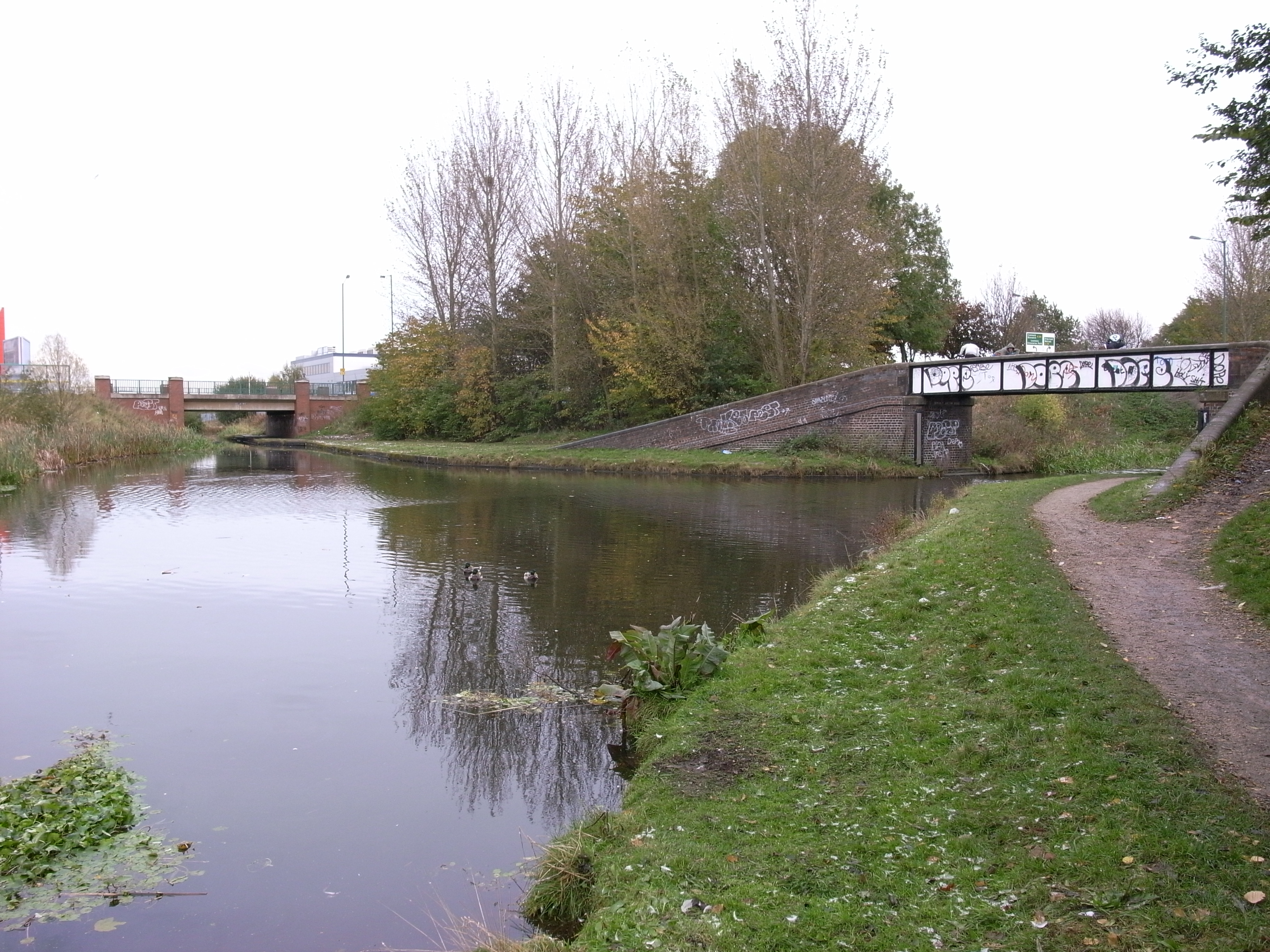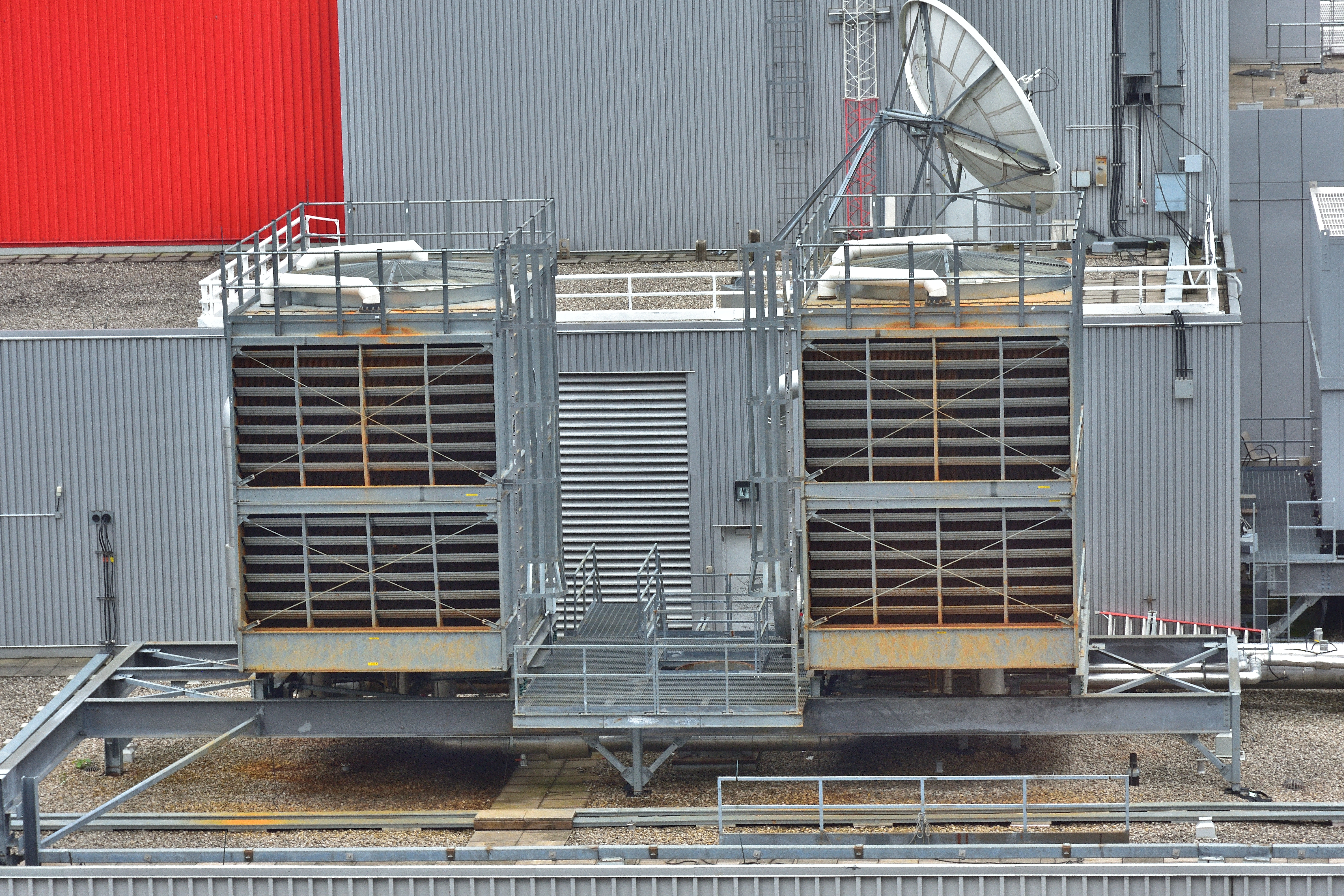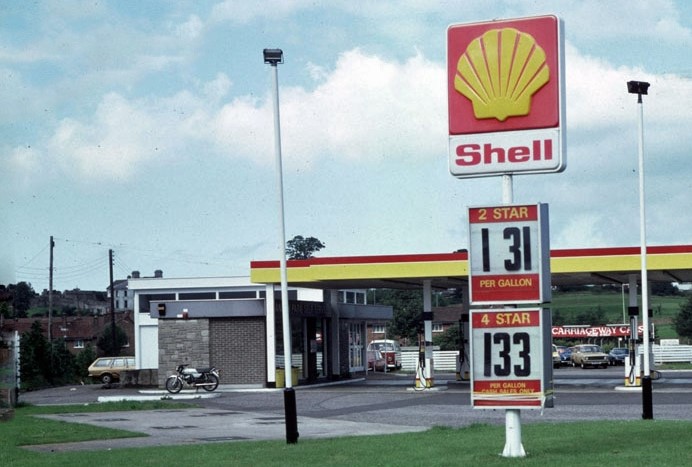|
Birchills Power Station
Birchills power station and Walsall power station are a series of three coal-fired power stations in, or near, Walsall in the West Midlands, England. Walsall power station (1895–1917) The first electricity supply to Walsall began in the 1890s. In 1890 Walsall Corporation were granted a Provisional Order by the Board of Trade to give them legal powers to generate and supply electricity to Walsall. The Corporation built a power station in Wolverhampton Street Walsall (52°35’10”N 01°59’33”W) which began supplying electricity in 1895. Plant The plant at the station consisted coal-fired boilers supplying steam to Chandler compound engines coupled directly to Parker two-pole dynamos. The initial capacity of the plant was 240 kW with a maximum load of 155 kW. New equipment was added and the ultimate generating capacity was 2.6 MW. Operation In 1898 74,556 kWh of electricity was sold to 101 customers plus 21,820 kWh for public lighting. The sale of electricity ... [...More Info...] [...Related Items...] OR: [Wikipedia] [Google] [Baidu] |
West Midlands (county)
West Midlands is a metropolitan county in the West Midlands Region, England, with a 2021 population of 2,919,600, making it the second most populous county in England after Greater London. It was created in 1974 by the Local Government Act 1972, from parts of Staffordshire, Worcestershire and Warwickshire. The county is a NUTS 2 region within the wider NUTS 1 region of the same name. It embraces seven metropolitan boroughs: the cities of Birmingham, Coventry and Wolverhampton, and the boroughs of Dudley, Sandwell, Solihull and Walsall. The county is overseen by the West Midlands Combined Authority, which covers all seven boroughs and other non-constituent councils, on economy, transport and housing. Status The metropolitan county exists in law, as a geographical frame of reference, and as a ceremonial county. As such it has a Lord Lieutenant. and a High Sheriff. Between 1974 and 1986, the West Midlands County Council was the administrative body covering the count ... [...More Info...] [...Related Items...] OR: [Wikipedia] [Google] [Baidu] |
Wyrley And Essington Canal
The Wyrley and Essington Canal, known locally as "the Curly Wyrley", is a canal in the English Midlands. As built it ran from Wolverhampton to Huddlesford Junction near Lichfield, with a number of branches: some parts are currently derelict. Pending planned restoration to Huddlesford, the navigable mainline now terminates at Ogley Junction near Brownhills. In 2008 it was designated a Local Nature Reserve. Construction The canal was built to allow transport of coal from coal mines near Wyrley, Essington and New Invention to Wolverhampton and Walsall, but also carried limestone and other goods. An Act of Parliament received the Royal Assent on 30 April 1792, entitled ''"An Act for making and maintaining a navigable Canal from, or from near, Wyrley Bank, in the county of Stafford, to communicate with the Birmingham and Birmingham and Fazeley Canal, at or near the town of Wolverhampton, in the said county; and also certain collateral Cuts therein described from the said inten ... [...More Info...] [...Related Items...] OR: [Wikipedia] [Google] [Baidu] |
Coal-fired Power Stations In England
Coal is a combustible black or brownish-black sedimentary rock, formed as rock strata called coal seams. Coal is mostly carbon with variable amounts of other elements, chiefly hydrogen, sulfur, oxygen, and nitrogen. Coal is formed when dead plant matter decays into peat and is converted into coal by the heat and pressure of deep burial over millions of years. Vast deposits of coal originate in former wetlands called coal forests that covered much of the Earth's tropical land areas during the late Carboniferous ( Pennsylvanian) and Permian times. Many significant coal deposits are younger than this and originate from the Mesozoic and Cenozoic eras. Coal is used primarily as a fuel. While coal has been known and used for thousands of years, its usage was limited until the Industrial Revolution. With the invention of the steam engine, coal consumption increased. In 2020, coal supplied about a quarter of the world's primary energy and over a third of its electricity. Some iron a ... [...More Info...] [...Related Items...] OR: [Wikipedia] [Google] [Baidu] |
Cooling Tower
A cooling tower is a device that rejects waste heat to the atmosphere through the cooling of a coolant stream, usually a water stream to a lower temperature. Cooling towers may either use the evaporation of water to remove process heat and cool the working fluid to near the wet-bulb air temperature or, in the case of ''dry cooling towers'', rely solely on air to cool the working fluid to near the dry-bulb air temperature using radiators. Common applications include cooling the circulating water used in oil refineries, petrochemical and other chemical plants, thermal power stations, nuclear power stations and HVAC systems for cooling buildings. The classification is based on the type of air induction into the tower: the main types of cooling towers are natural draft and induced draft cooling towers. Cooling towers vary in size from small roof-top units to very large hyperboloid structures (as in the adjacent image) that can be up to tall and in diameter, or recta ... [...More Info...] [...Related Items...] OR: [Wikipedia] [Google] [Baidu] |
British Thomson-Houston
British Thomson-Houston (BTH) was a British engineering and heavy industry, heavy industrial company, based at Rugby, Warwickshire, England, and founded as a subsidiary of the General Electric Company (GE) of Schenectady, New York, United States. They were known primarily for their electrical systems and steam turbines. BTH was taken into British ownership and amalgamated with the similar Metropolitan-Vickers company in 1928 to form Associated Electrical Industries (AEI), but the two brand identities were maintained until 1960. The holding company, AEI, later merged with The General Electric Company, GEC. In the 1960s AEI's apprenticeships were highly thought-of, both by the apprentices themselves and by their future employers, because they gave the participants valuable experience in the design, production and overall industrial management of a very wide range of electrical products. Over a hundred of the apprentices - who came to Rugby from all over the UK, and a few from abro ... [...More Info...] [...Related Items...] OR: [Wikipedia] [Google] [Baidu] |
Bar (unit)
The bar is a metric unit of pressure, but not part of the International System of Units (SI). It is defined as exactly equal to 100,000 Pa (100 kPa), or slightly less than the current average atmospheric pressure on Earth at sea level (approximately 1.013 bar). By the barometric formula, 1 bar is roughly the atmospheric pressure on Earth at an altitude of 111 metres at 15 °C. The bar and the millibar were introduced by the Norwegian meteorologist Vilhelm Bjerknes, who was a founder of the modern practice of weather forecasting. The International System of Units, despite previously mentioning the bar, now omits any mention of it.. The bar has been legally recognised in countries of the European Union since 2004. British Standard BS 350:2004 ''Conversion Factors for Units''. The US National Institute of Standards and Technology (NIST) deprecates its use except for "limited use in meteorology" and lists it as one of several units that "must not be i ... [...More Info...] [...Related Items...] OR: [Wikipedia] [Google] [Baidu] |
Pounds Per Square Inch
The pound per square inch or, more accurately, pound-force per square inch (symbol: lbf/in2; abbreviation: psi) is a unit of pressure or of stress based on avoirdupois units. It is the pressure resulting from a force of one pound-force applied to an area of one square inch. In SI units, 1 psi is approximately equal to 6895 Pa. Pounds per square inch absolute (psia) is used to make it clear that the pressure is relative to a vacuum rather than the ambient atmospheric pressure. Since atmospheric pressure at sea level is around , this will be added to any pressure reading made in air at sea level. The converse is pounds per square inch gauge (psig), indicating that the pressure is relative to atmospheric pressure. For example, a bicycle tire pumped up to 65 psig in a local atmospheric pressure at sea level (14.7 psi) will have a pressure of 79.7 psia (14.7 psi + 65 psi). When gauge pressure is referenced to something other than ambient atmospheric pressure, then ... [...More Info...] [...Related Items...] OR: [Wikipedia] [Google] [Baidu] |
Babcock & Wilcox
Babcock & Wilcox is an American renewable, environmental and thermal energy technologies and service provider that is active and has operations in many international markets across the globe with its headquarters in Akron, Ohio, USA. Historically, the company is best known for their steam boilers. Background The company was founded in 1867 in Providence, Rhode Island, by partners Stephen Wilcox and George Herman Babcock, George Babcock to manufacture and market Wilcox's patented water-tube boiler. B&W's list of innovations and firsts include the world's first installed utility boiler (1881); manufacture of boilers to power New York City's first subway (1902); first pulverized coal power plant (1918); design and manufacture of components for , the world's first nuclear-powered submarine (1953–55); the first supercritical boiler, supercritical pressure coal-fired boiler (1957); design and supply of reactors for the first U.S. built nuclear-powered surface ship, (1961).''Steam/it ... [...More Info...] [...Related Items...] OR: [Wikipedia] [Google] [Baidu] |
Nationalization
Nationalization (nationalisation in British English) is the process of transforming privately-owned assets into public assets by bringing them under the public ownership of a national government or state. Nationalization usually refers to private assets or to assets owned by lower levels of government (such as municipalities) being transferred to the state. Nationalization contrasts with privatization and with demutualization. When previously nationalized assets are privatized and subsequently returned to public ownership at a later stage, they are said to have undergone renationalization. Industries often subject to nationalization include the commanding heights of the economy – telecommunications, electric power, fossil fuels, railways, airlines, iron ore, media, postal services, banks, and water – though, in many jurisdictions, many such entities have no history of private ownership. Nationalization may occur with or without financial compensation to the former ... [...More Info...] [...Related Items...] OR: [Wikipedia] [Google] [Baidu] |
Electricity Commissioners
The Electricity Commissioners were a department of the United Kingdom government's Ministry of Transport, which regulated the electricity supply industry from 1920 until nationalisation in 1948. It was responsible for securing reorganisation on a regional basis and considered schemes for centralisation in a small number of large generating stations owned by joint electricity authorities. History In 1917, the UK government was planning the reconstruction of the nation's industries after the First World War. The Board of Trade set up the Electric Power Supply Committee, chaired by Sir Archibald Williamson, which proposed the effective nationalisation of the industry. Subsequently, in 1919 under the chairmanship of Sir Henry Birchenough, the Advisory Council to the Ministry of Reconstruction produced the Report of the Committee of Chairmen on Electric Power Supply. The committee were asked to submit general comments or suggestions on the broad administrative and commercial ... [...More Info...] [...Related Items...] OR: [Wikipedia] [Google] [Baidu] |
Imperial Gallon
The gallon is a unit of volume in imperial units and United States customary units. Three different versions are in current use: *the imperial gallon (imp gal), defined as , which is or was used in the United Kingdom, Ireland, Canada, Australia, New Zealand, and some Caribbean countries; *the US gallon (US gal), defined as , (231 cubic inches) which is used in the US and some Latin American and Caribbean countries; and *the US dry gallon ("usdrygal"), defined as US bushel (exactly ). There are two pints in a quart and four quarts in a gallon. Different sizes of pints account for the different sizes of the imperial and US gallons. The IEEE standard symbol for both US (liquid) and imperial gallon is gal, not to be confused with the gal (symbol: Gal), a CGS unit of acceleration. Definitions The gallon currently has one definition in the imperial system, and two definitions (liquid and dry) in the US customary system. Historically, there were many definitions and redefinit ... [...More Info...] [...Related Items...] OR: [Wikipedia] [Google] [Baidu] |
British Electricity Authority
The British Electricity Authority (BEA) was established as the central British electricity authority in 1948 under the nationalisation of Great Britain's electricity supply industry enacted by the Electricity Act 1947. The BEA was responsible for the generation, transmission and sale of electricity to area electricity boards, and the development and maintenance of an efficient, coordinated and economical system of electricity supply. History The authority took over the operations of over 600 small public supply power companies, municipal authority electricity departments and the Central Electricity Board to form the BEA, which comprised a central authority and 14 area boards. Its scope did not include control of the North of Scotland Hydro-Electric Board, which had been founded in 1943 and remained independent of the BEA. The appointment of chairmen and members of the BEA and the area boards were made in August 1947 and the BEA was formally established on 15 August 1947. ... [...More Info...] [...Related Items...] OR: [Wikipedia] [Google] [Baidu] |




